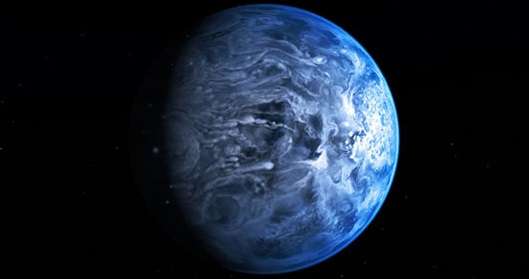Groundbreaking scientific work led by researchers at the University of St Andrews is redefining the trajectory of planetary evolution.
It is widely accepted that the juvenile Earth’s atmosphere was devoid of oxygen until around 2.4 billion years ago, when oxygen concentrations rose abruptly during what is known as the ‘Great Oxidation Event’ (GOE). This event fundamentally altered the chemistry and the ecological structure of our planet, ultimately paving the way for the emergence of complex life.
Researchers from the Department of Earth & Environmental Sciences at St Andrews, in collaboration with the University of Leeds (UK), the University of Maryland (USA), and NASA Goddard Space Flight Center (USA), have revolutionised this narrative of atmospheric history, based on chemical analysis of sedimentary rocks deposited immediately prior to the GOE.
These rocks – from South Africa and Western Australia – suggest that Earth’s early oxygen-free atmosphere was far more fascinating than previously thought. Namely, these new geochemical analyses reveal widespread periodic occurrences of a hydrocarbon-rich “haze”, similar to the atmosphere on Saturn’s Moon, Titan.
The findings are published in Earth and Planetary Science Letters, a leading journal for researchers across the Earth and planetary sciences community.
Dr Gareth Izon, who led the research, said: “These data are really exciting because we now see evidence for a hazy atmosphere in multiple spatially separated sedimentary successions spanning nearly 200 million years of Earth history.”
The researchers speculate that episodic bursts of methane production from specialised microorganisms (“methanogens”) could explain this phenomenon.
Dr Aubrey Zerkle, principal investigator of the project, said: “These events provide a spectacular example of the role of biology in modulating our planetary atmosphere, particularly on the early Earth when microbes ruled the planet.”
“Importantly, these new records emphasise the need to understand the mechanisms and feedbacks controlling both biogenic oxygen and methane fluxes in the prelude to the GOE,” Izon continued.
Dr Mark Claire, a co-author on the study, added: “This biologically-produced methane haze scatters sunlight, so could have had dramatic consequences on the climate. Examining the early Earth has once again revealed a complicated and fascinating interplay between Earth and the life it supports.”
Reference:
Gareth Izon et al. Multiple oscillations in Neoarchaean atmospheric chemistry, Earth and Planetary Science Letters (2015). DOI: 10.1016/j.epsl.2015.09.018
Note: The above post is reprinted from materials provided by University of St Andrews.











